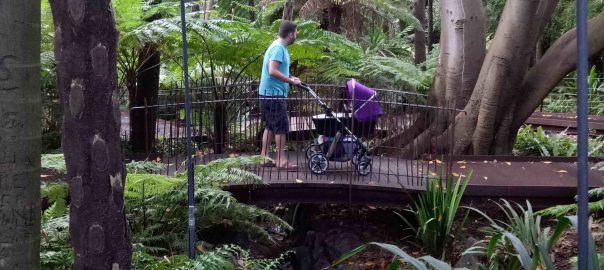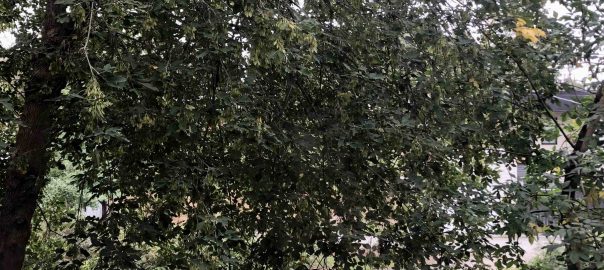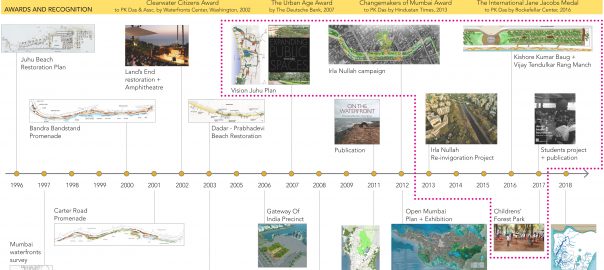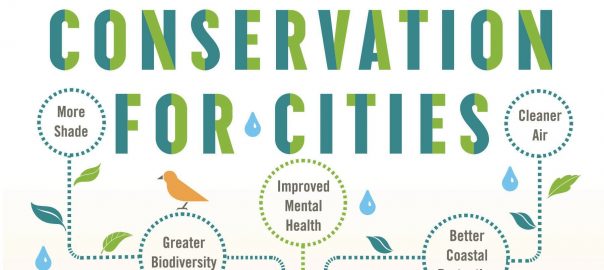Nature in cities benefits our health, but how can we bring this fact into more specific guidelines and insights? Here are seven key messages for planners and designers.
What the pandemic we live in revealed is something we knew, experienced, but had not well-evidenced at scale: nature in cities is fundamental for maintaining and regaining our physical and mental health. There is a broad literature on the benefits of green space for promoting physical activity and health, reducing obesity, diabetes, and cardiovascular and cardiometabolic risk. Green space can also increase mental and psychological well-being through different mechanisms (e.g., relieving stress, reducing concentration problems, significant improvement in self-esteem and cognitive functioning). In addition, green space can improve the sense of place, neighborhood satisfaction, social cohesion, and social capital, and reduce crime and incivilities, all related to social determinants of health. The provision of green space can, therefore, potentially counteract some of the health-related manifestations of inequality (Jennings, Larson, & Yun, 2016; Sharifi, Levin, M.Stone, & Nygaard, 2021; Sugiyama, Leslie, Giles-Corti, & Owen, 2008).
During the Nature of Cities Festival 2021, we brought together different perspectives on what matters for planning and designing urban green spaces or urban ecosystems that can mediate or contribute to better physical and mental health. Our dialogue session brought forward seven key messages for urban planners and urban designers to consider building from evidence in Australian cities:
- Quality and quantity of urban parks matters for healthy cities;
- Access to urban parks can be a small step towards addressing health injustices in cities;
- Access to urban green spaces improves well-being;
- Shocks alter behavior and perceptions of people for using urban green spaces;
- Urban parks were preferred gateways to other peri-urban nature areas during the pandemic;
- Plan and design cities with green should be done with wise considerations on different heat effects during the day and night.
- Every bit of green matters when dealing with heat in cities.
First, efforts to design and maintain high-quality urban parks can contribute to people’s health. It is well known that physical inactivity is a major cause of chronic diseases, and moderate-intensity physical activity such as walking is protective against them. An important contribution of urban parks is to provide people with an opportunity to be physically active. Research has found that high-quality urban parks with various features (e.g., walking paths, grassed areas, amenities) are conducive to recreational walking and park visits (Sugiyama et al 2015). Improving the quality of urban parks thus has the potential to increase residents’ physical activity. In addition, visiting parks means exposure to natural environments and a chance to interact with neighbors, which are beneficial for mental health and well-being. It is important to point out that renovating urban parks is much easier than improving other environmental factors that are known to be related to walking (e.g., population density, street network, public transport) and there is public support for park improvement (Sugiyama et al 2018). Local governments are recommended to consider improving their parks to enhance residents’ health.
Second, urban parks may be used to mitigate socioeconomic inequalities in health. There are systematic and persistent disparities in health between the deprived and affluent, and reducing such health inequalities is a key priority in public health (Bleich et al, 2012). Studies have shown that areas with higher levels of deprivation and those with lower levels do not differ in terms of the number of parks, but they differ in the quality of parks: parks in deprived areas tend to have more incivilities (e.g., litter, graffiti, poor maintenance) and fewer amenities than those in less deprived areas (Crawford et al, 2008; Hughey et al, 2016). Given that people of lower socioeconomic status are less physically active during leisure time than those of higher socioeconomic status (Beenacers et al, 2012), it is possible to mitigate health inequalities by improving the quality of parks and encouraging recreational physical activity in deprived neighborhoods. This can be a small step toward tackling health injustices in cities.
Third, access to green spaces in cities is associated with higher levels of subjective well-being. To effectively contribute to bringing this knowledge closer to policy front, we develop a novel green space accessibility index that, unlike conventional measurement approaches, considers all green spaces that can be accessed from a locality. The access index is affected by the distance to green space, the crowding of that green space, and the area of green space. Our gravity model is built to indicate that the importance of green space decreases when the distance increases but does not disappear. (Sharifi, Nygaard, M.Stone, & Levin, 2021). To analyze the effect of green space, we build a hedonic model of subjective well-being. The results reaffirm and emphasize green space’s role in supporting well-being and the importance of protecting or enhancing green space provision in urban environments. In the next step, we examine the effect of different green space qualities, in terms of size, on subjective well-being. The results indicate that only the large green spaces — greater than about 1 hectare — have a significant and consistent effect on subjective well-being. To increase green space efficacy, therefore, policy initiatives need to consider developing interconnected green spaces, combining them with walkable areas that support local jobs and social networking (Sharifi, Nygaard, & M.Stone, 2021).
Fourth, shocks like bushfires and the COVID pandemic alter behavior and perceptions of people for using urban green spaces. During the 2019-20 summer bushfires, it was unsafe for Canberrans to go outdoors, because bushfires in the state of New South Wales have resulted in smoke haze that worsened air quality in Canberra (ACT Emergency Services Agency, 2020). During the COVID pandemic, in order to stop the spread of COVID-19, Canberrans were encouraged by the local ACT Government to avoid mass gathering and non-essential travel. Furthermore, preliminary evidence suggests that these two recent shocks have also affected the ability of residents to interact with and use various forms of urban green space and green infrastructure in Canberra. Green spaces are important to people through the provision of various general and mental health benefits (World Health Organisation, 2016, Astell-Burt and Feng, 2019), which are particularly vital for maintaining wellbeing during stressful times of shocks. It is crucial that the impacts of shocks are taken into consideration during the design and management of urban green spaces in the future, as the occurrence of shocks are expected to be more frequent.
Fifth, urban parks are gateways for connecting with nature and people and are preferred to other peri-urban nature areas during the pandemic. Urban parks play an important role in the everyday lives of urban residents. In Canberra, many activities take place in urban parks and in the presence of green infrastructure. Urban parks are often regarded as community hubs, where residents could come for exercise, or gather for BBQs and picnics. Alternatively, they are also a place for relaxation, where Canberrans could rest, and enjoy the natural environment. Preliminary evidence suggests that urban parks are highly valued during the COVID pandemic in Canberra. Local parks were also more accessible during the pandemic compared to peri-urban nature areas, which are often further away. Visits to local parks became a chance for residents to leave home, after spending more time working remotely, and to restore their well-being. This has helped people to maintain their health and to enhance their resilience during the pandemic.
Sixth, when planning for bringing vegetation or trees to cities, it needs to be done in consideration of the day and night heat effects it will have on people. Excess urban heat is a major issue to the health and the thermal comfort of city occupants. In the Australian context, 86% of the Australian population residing in cities and frequent, severe heatwaves caused the second-highest mortality among all other natural disasters in Australia. Therefore, urban heat mitigation should be in the discussion with a high priority. Urban surface characteristics and their aerodynamics can cause excess heat in cities with altered urban energy budgets. Hence, my recent work is focused on how different urban surface characteristics are related to urban heat (Herath et al., 2021). Among “green” surfaces types in cities, canyon vegetation, urban trees, and green roofs proved to be potential heat mitigation strategies during different times of the day; in daytime and nighttime. Urban green proved to be highly effective to reduce nighttime temperature, therefore, urban green is applicable as Urban Heat Island (UHI) effect mitigation strategy. It is important to highlight when cities are planning with green spaces, designing should consider their effectiveness in the time of the day and the spatial distribution. This could be effective in terms of urban heat as well as with other ecosystem services by green in an urban ecosystem.
Seventh, we should appreciate and count every bit of green for dealing with heat in the city. In the study in Melbourne, the best results for heat reduction were obtained from extreme ratios of surface types such as green roofs and cool roofs (Herath et al., 2021). But in realistic conditions, urban designs with green and cool surfaces have to be limited. As revealed in correlation analysis, urban vegetation, green roofs, and cool roofs depicted high, strong negative relationships. On the other hand, the canyon vegetation performed linearly for minimum temperature in the CBD, as the higher the urban trees ratio, the lower the nighttime temperature. Moreover, strategic improvements in surface characteristics should be made in the overall city, regardless of the urban condition, CBD, or the rest of the urban because it is essential for the best thermal performance in the entire city. Also, since the effectiveness of different surfaces differs with the time of the day, we propose experimentations for strategic combinations of different surfaces for maximum effectiveness. Therefore, it is evident that every bit of green counts equally for cooling cities; however, with an accurate arrangement.
Nature in cities benefits our health; how to bring this into more specific guidelines and insights for urban planning is an on-going quest. As the main motivation and mission of the Nature of Cities Festival 2021 was to connect different perspectives and find connections and bring different pieces of the puzzle together, we hope that our blog post from the dialogue session provides a summary of such an attempt.
Takemi Sugiyama, Farahnaz Sharifi, Zirui (Jerry) Yao, Prabhasri Herath, and Niki Frantzeskaki
Melbourne, Melbourne, Canberra, Canberra, and Melbourne
On The Nature of Cities
References
ACT EMERGENCY SERVICES AGENCY 2020. ACT Emergency Services Agency Operational Review of the Bushfire Season 2019/20, Canberra.
ASTELL-BURT, T. & FENG, X. 2019. Association of Urban Green Space With Mental Health and General Health Among Adults in Australia. JAMA Network Open, 2, 198209-198209.
Beenackers MA, Kamphuis CBM, Giskes K, et al. Socioeconomic inequalities in occupational, leisure-time, and transport-related physical activity among European adults: A systematic review. International Journal of Behavioral Nutrition and Physical Activity. Sep 19 2012;9116. doi:10.1186/1479-5868-9-116
Bleich SN, Jarlenski MP, Bell CN, LaVeist TA. Health inequalities: Trends, progress, and policy. Annu Rev Public Health. Apr 2012;33:7-40. doi:10.1146/annurev-publhealth-031811-124658
Crawford D, Timperio A, Giles-Corti B, et al. Do features of public open spaces vary according to neighbourhood socio-economic status? Health & Place. 2008;14(4):889-893. doi:10.1016/j.healthplace.2007.11.002
Herath, P., Thatcher, M., Jin, H., & Bai, X. (2021). Effectiveness of urban surface characteristics as mitigation strategies for the excessive summer heat in cities. Sustainable Cities and Society, 72(June), 103072. https://doi.org/10.1016/j.scs.2021.103072
Jennings, V., Larson, L., & Yun, J. (2016). Advancing sustainability through urban green space: Cultural ecosystem services, equity, and social determinants of health. International Journal of environmental research and public health, 13(2), 196.
Sharifi, F., Levin, I., Stone, W. M., & Nygaard, A. (2021). Green space and subjective well-being in the Just City: A scoping review. Environmental Science & Policy, 120, 118-126.
Sharifi, F., Nygaard, A., & Stone, W. M. (2021). Heterogeneity in the Subjective Well-being Impact of Access to Urban Green Space. Sustainable Cities and Society, 103244.
Sharifi, F., Nygaard, A., M.Stone, W., & Levin, I. (2021). Accessing green space in Melbourne: Measuring inequity and household mobility. Landscape and Urban Planning, 207, 104004.
Sugiyama, T., Gunn, L.D., Christian, H., Francis, J., Foster, S., Hooper, P., . . . Giles-Corti, B. 2015. Quality of public open spaces and recreational walking. American Journal of Public Health, 105:2490–2495. doi: 10.2105/AJPH.2015.302890
Sugiyama T, Carver A, Koohsari MJ, Veitch J. Advantages of public green spaces in enhancing population health. Landscape and Urban Planning. 2018;178:12-17. Doi: 10.1016/j.landurbplan.2018.05.019
Sugiyama, T., Leslie, E., Giles-Corti, B., & Owen, N. (2008). Associations of neighbourhood greenness with physical and mental health: do walking, social coherence and local social interaction explain the relationships? Journal of Epidemiology & Community Health, 62(5), e9-e9.
WORLD HEALTH ORGANIZATION 2016. Urban green spaces and health – a review of evidence, Copenhagen.
about the writer
Farahnaz Sharifi
Farahnaz Sharifi is a researcher at the Centre for Urban Transition. Farah utilises advanced GIS and quantitative methods to analyse the relationship between urban amenities and subjective well-being from the just city perspective.
about the writer
Zirui Yao
Zirui (Jerry) Yao is an environmental science student and researcher with an interest in the research domains of urban green infrastructure and urban sustainability. His recent research focuses on the access to green infrastructure and wellbeing of Canberra residents.
about the writer
Prabhasri Herath
Prabhasri Herath is an environmentalist and a researcher with an interest in sustainable, resilient and liveable cities. Her research work focuses on excess heat mitigation with Nature-based Solutions in cities.
about the writer
Niki Frantzeskaki
Niki Frantzeskaki is a Chair Professor in Regional and Metropolitan Governance and Planning at Utrecht University the Netherlands. Her research is centered on the planning and governance of urban nature, urban biodiversity and climate adaptation in cities, focusing on novel approaches such as experimentation, co-creation and collaborative governance.







Leave a Reply